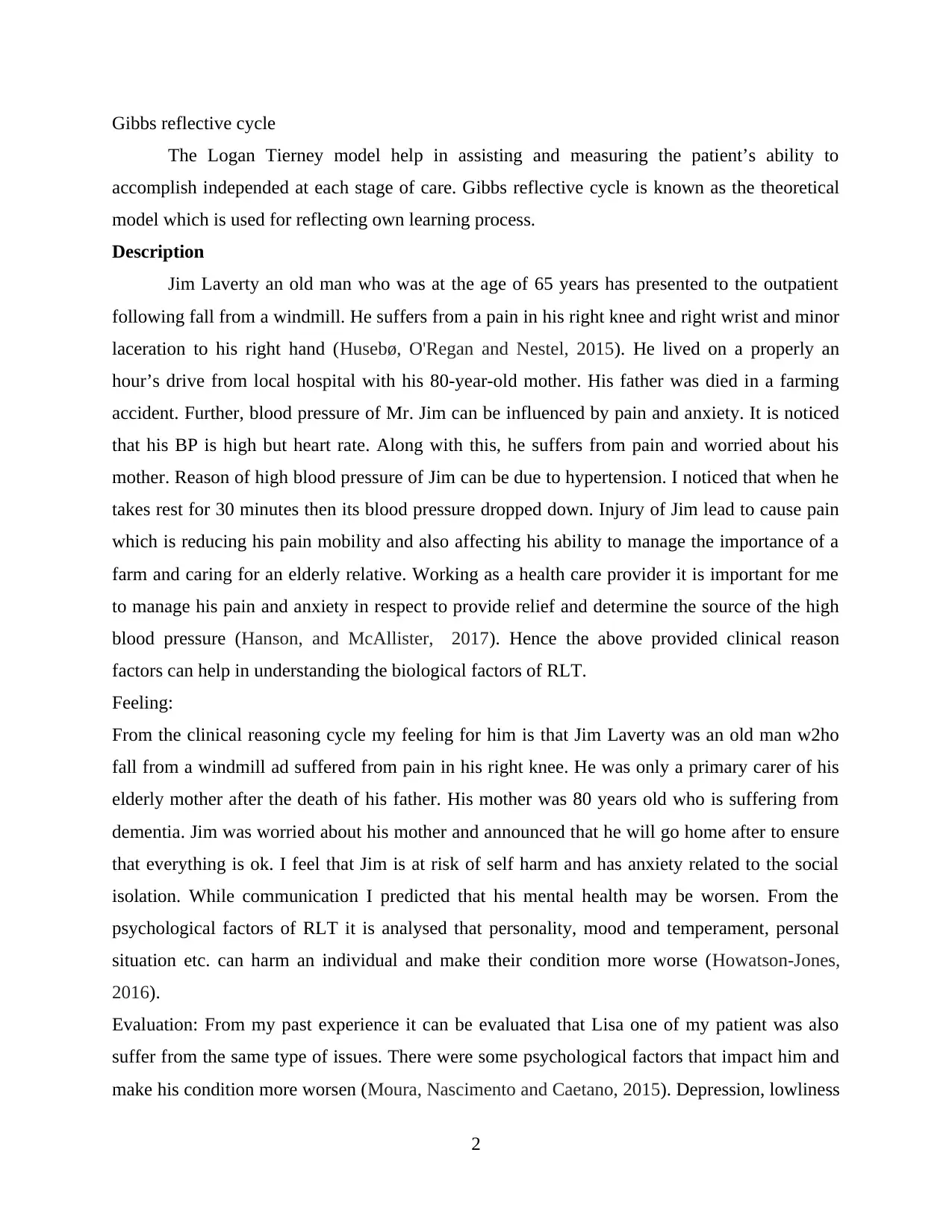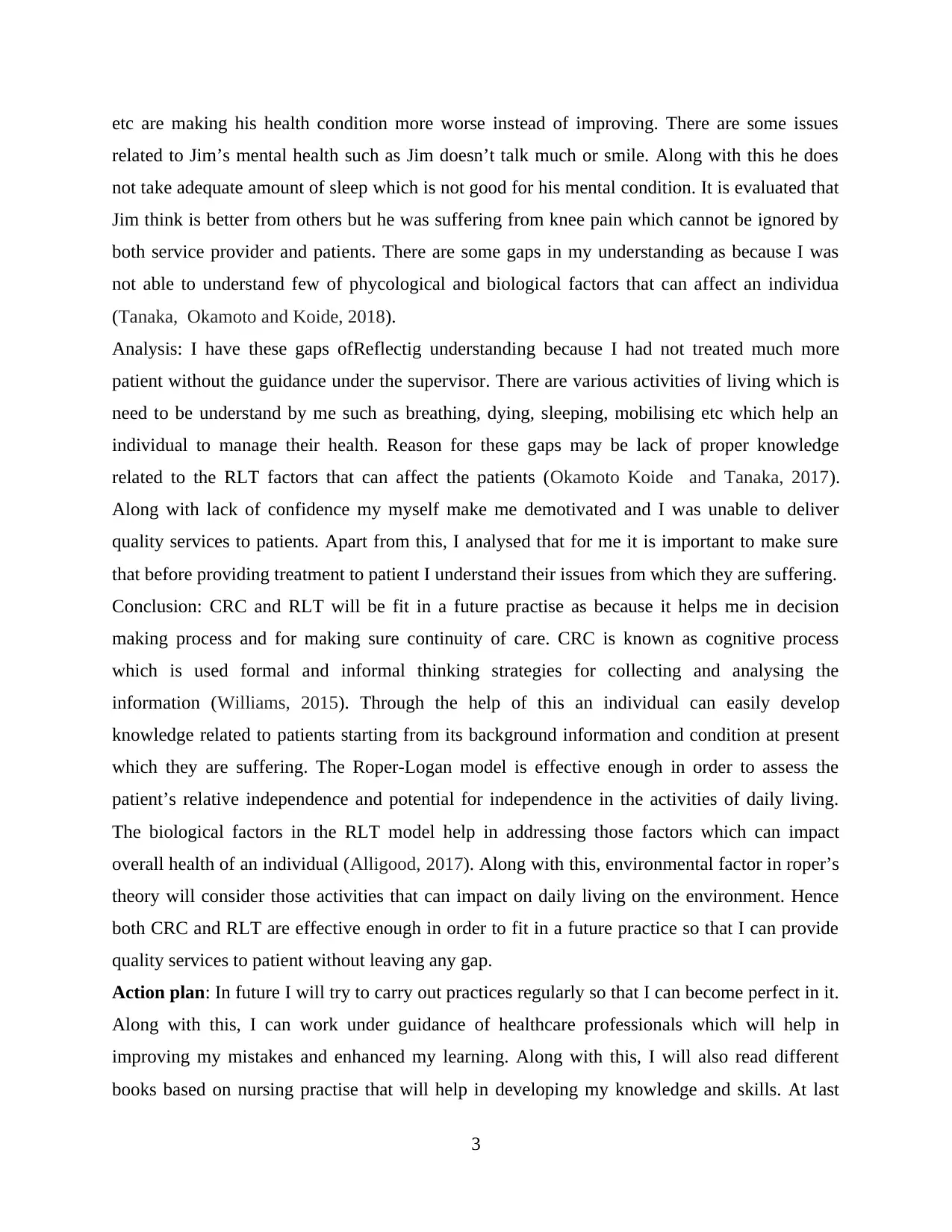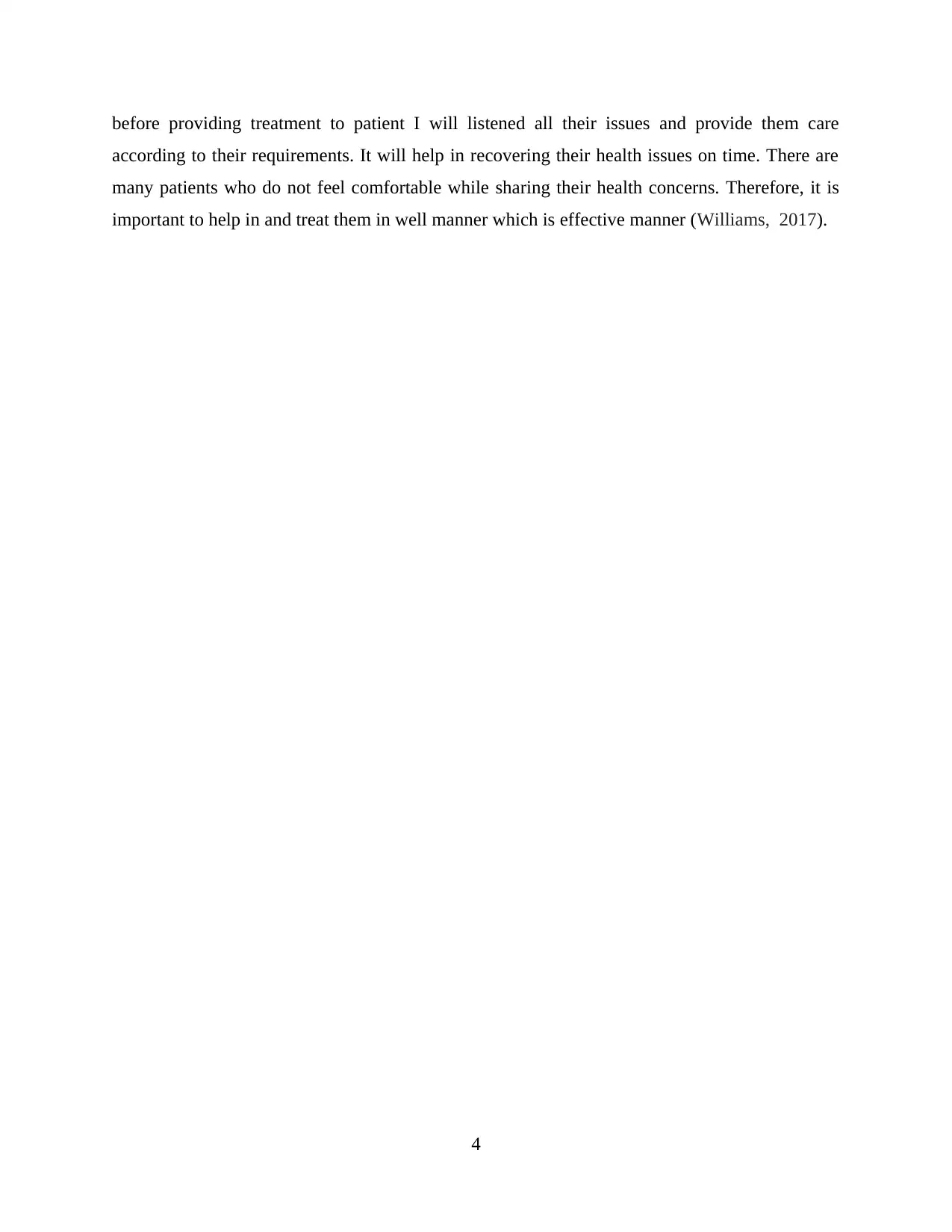Analysis of Gibbs Reflective Cycle in Healthcare Setting
VerifiedAdded on 2021/01/02
|4
|1077
|296
Report
AI Summary
This report analyzes the application of the Gibbs Reflective Cycle and the Roper-Logan-Tierney (RLT) model in a healthcare setting. The assignment focuses on a case study involving an elderly patient, Jim Laverty, who experienced a fall and presents with various health concerns, including pain, anxiety, and high blood pressure. The student, acting as a healthcare provider, uses the Gibbs reflective cycle to examine their feelings, evaluation, analysis, and conclusion regarding the patient's condition. The report highlights the importance of understanding biological, psychological, and environmental factors in patient care, emphasizing the need for effective communication, pain management, and addressing the patient's anxieties. The analysis reveals gaps in the student's understanding and proposes an action plan for future practice, including seeking guidance, continuous learning, and patient-centered care. The report concludes that both the Clinical Reasoning Cycle (CRC) and RLT are valuable tools for decision-making and ensuring continuity of care, advocating for their integration into future healthcare practice. The report emphasizes the importance of a holistic approach to patient care, considering both the physical and psychological well-being of the individual.
1 out of 4











![[object Object]](/_next/static/media/star-bottom.7253800d.svg)